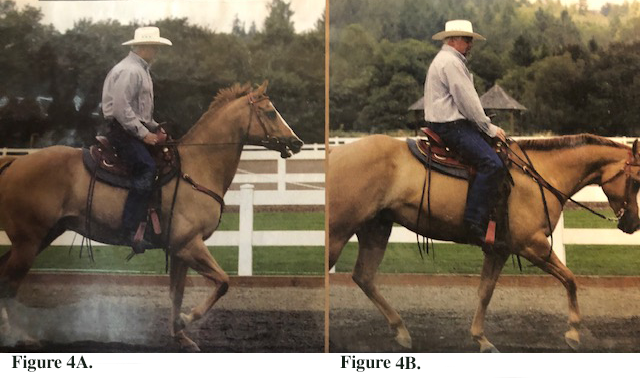BITS & REINS
BITS & REINS FROM CALDWELL SADDLES
CALL FOR PRICING
Call us at 706-886-0314
A quick review of bit terminology and function might be useful. The PURCHASE is the portion of the bit rising above the MOUTHPIECE; the length of the purchase affects both timing and bit leverage. The SHANK is the lower arm of the bit, and affects leverage ... the longer the shank, the greater the leverage and hence the greater the control. The PORT is the U-shaped portion of the mouthpiece; as the bit is rotated in the horse's mouth, the port will press against the tongue with greater or lesser pressure.
The metal used in the mouthpiece also is important. A copper mouthpiece encourages salivation and a "soft" mouth. An iron mouthpiece is termed a "sweet" bit; as it oxidizes (rusts) in the horse's mouth it gives a sweet taste. Stainless steel mouthpieces have very little taste, encourage a dry mouth, and last for years.
The mouthpiece may be solid or broken into two or three parts; obviously, the mouthpiece configuration will affect bit effectiveness and the horse's response to the reins.
For a more in-depth discussion of bits and how they work, please watch our video of Charon discussing Bits and How They Work.
The examples shown below cover a number of different types of bits, but they don't cover our full range of bits. If you don't see the type you want, give us a call or e-mail us.
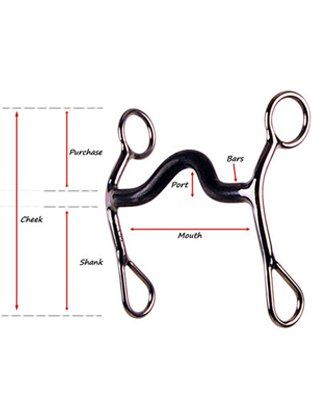

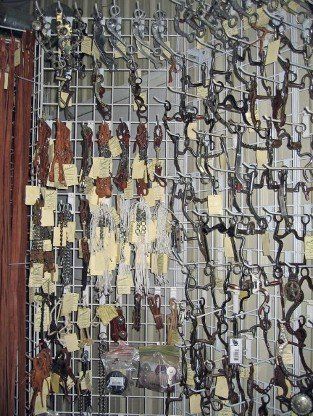
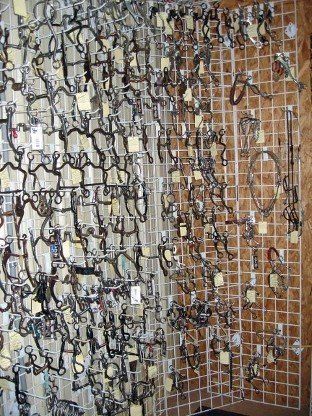
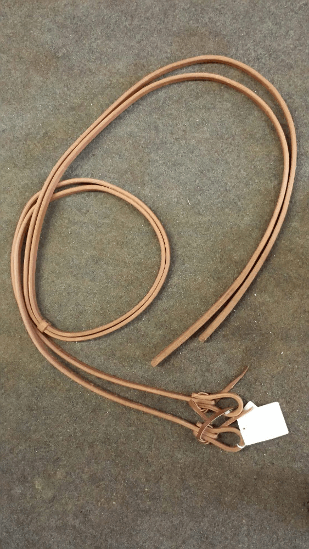
8" Harness Leather
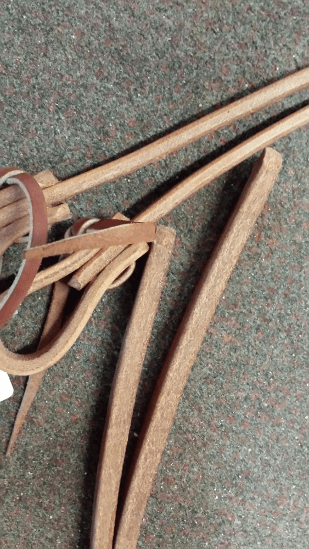
Split Reins
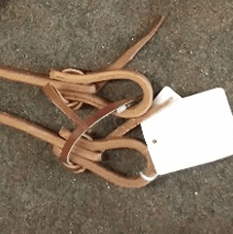
standard harness leather water loops
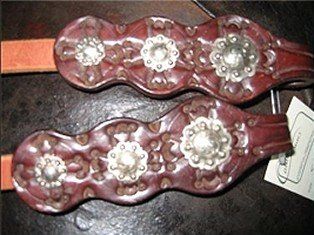
custom water loops
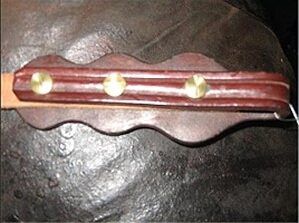
water loop
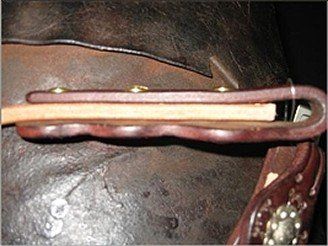
water loop side view
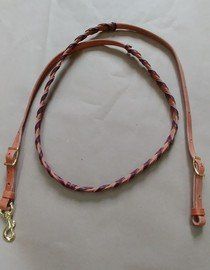
7'x3/4" harness leather w/ Latigo lacing Barrel Reins
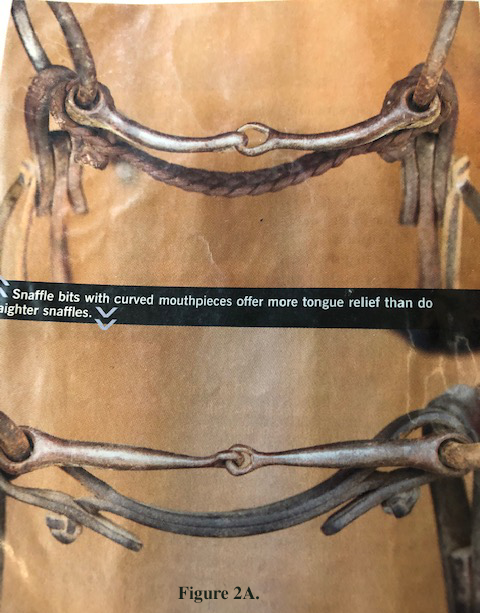
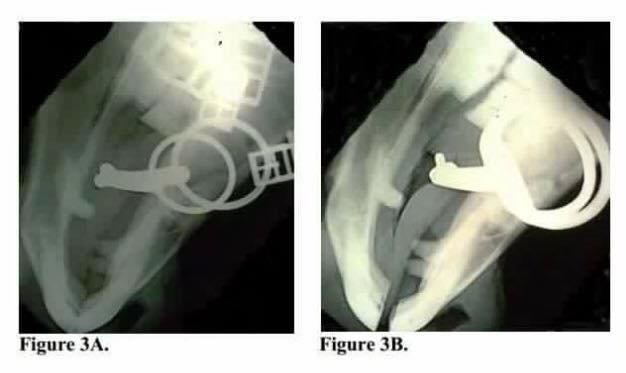
In my video on bits, I try to discuss why straight sided snaffles are a failure, especially when pulled back with reins. This closes the mouth-piece like a vice on the jaws and pokes the break of the snaffle up into the mouth's roof. (As seen in Fig. 3A) The curved mouth-piece comes nowhere near the roof of the horse's mouth, instead it puts pressure on the tongue.
Pressure on the roof causes the horse to 1) lift his head 2) gap his mouth 3) hollow his back and 4) extend his hind legs. The horse will also be unable to see the ground causing the rider to loose his control for turning and stopping.
Pressure on the tongue (As seen in Fig 3B) tucks the nose, rounds the back, keeps the hind end his body, and gives the rider control of the nose which in turn controls the body.
